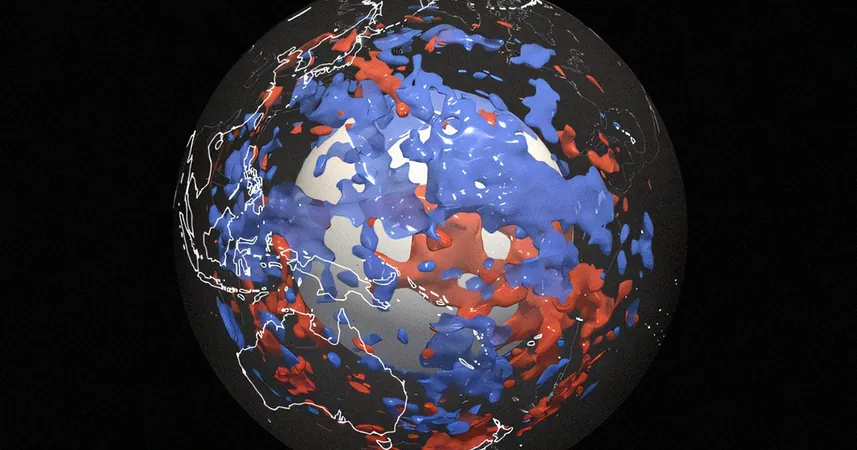
Unveiling the Secrets of a "Lost World" Beneath the Pacific Ocean: What Scientists Discovered!
2025-01-11
Author: Wei
Introduction
In an astonishing breakthrough, a team of geophysicists from ETH Zurich, Switzerland, has made a groundbreaking discovery while examining earthquake waves to delve into the intricate internal structures of our Earth. Their findings hint at a mysterious "lost world" lying beneath the depths of the Pacific Ocean, challenging our understanding of tectonic processes and the Earth's crust.
The Discovery
The researchers identified unusual areas within Earth's interior, which they believe to be remnants of submerged tectonic plates hidden far beneath the ocean surface. The startling aspect of this discovery? These remnants are located significantly distant from known tectonic plate boundaries—regions where scientists would typically expect to find such geological features.
Research Methodology
Detailed in a recent study published in *Scientific Reports*, the team utilized a state-of-the-art supercomputer to analyze seismic data from stations worldwide. They crafted a new high-resolution model of the Earth's interior that revealed the existence of submerged tectonic materials in locations previously thought to be seismically inactive.
Seismic Wave Analysis
The precise method employed by the team involves examining how seismic waves propagate from earthquake epicenters. From this data, geophysicists can infer the density and elasticity of the rocky material through which these waves travel. This indirect investigation is crucial since we have not yet drilled deep enough to gather physical samples from Earth’s mantle.
Implications of the Findings
The discovery of these remnants under the Pacific Ocean is perplexing, as current geological models suggested that such material should not exist in these regions due to minimal plate subduction activity. First author and doctoral candidate Thomas Schouten noted, "It seems that such zones within the Earth's mantle are more prevalent than previously anticipated."
The Nature of the Materials
However, the mystery of these materials continues. Schouten explained that the remnants could be ancient, silica-rich substances that have persisted since the mantle's formation roughly 4 billion years ago, existing despite relentless mantle convection. Alternatively, they could represent accumulations of iron-rich rocks formed over eons as the mantle has shifted.
Conclusion
Yet, the science remains complex. "The waves we analyze reflect various properties, primarily their velocity through the Earth," Schouten explained. To unravel the true nature of these anomalies, researchers must investigate the myriad of material characteristics that could result in the wave speeds observed.
This exciting revelation not only opens up new avenues for understanding Earth's geological activity but also emphasizes the need to further explore the planet's mysterious underworld. As our technological capabilities advance, who knows what other secrets lie beneath the Pacific Ocean? Stay tuned for more thrilling updates from the deep!
 Brasil (PT)
Brasil (PT)
 Canada (EN)
Canada (EN)
 Chile (ES)
Chile (ES)
 Česko (CS)
Česko (CS)
 대한민국 (KO)
대한민국 (KO)
 España (ES)
España (ES)
 France (FR)
France (FR)
 Hong Kong (EN)
Hong Kong (EN)
 Italia (IT)
Italia (IT)
 日本 (JA)
日本 (JA)
 Magyarország (HU)
Magyarország (HU)
 Norge (NO)
Norge (NO)
 Polska (PL)
Polska (PL)
 Schweiz (DE)
Schweiz (DE)
 Singapore (EN)
Singapore (EN)
 Sverige (SV)
Sverige (SV)
 Suomi (FI)
Suomi (FI)
 Türkiye (TR)
Türkiye (TR)
 الإمارات العربية المتحدة (AR)
الإمارات العربية المتحدة (AR)